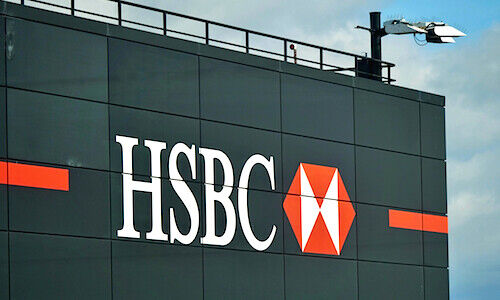HSBC: An Ex-Asia Slashing Mandate
Global footprint, headcount, office space and more will see shrinkage as HSBC will now mandate a more concentrated bet on wealth management in Asia.
After profits before tax in 2020 dropped 34 percent in 2020 to $8.78 billion, group chief Noel Quinn will look to intensify its focus in Asia, not only to boost overall profits but to accelerate a shift in the bank’s business mix. In fact, compensation at the top will be linked to this mandate for the first time ever.
According to Quinn in an analyst call, his and chief financial officer Ewen Stevenson’s upcoming scorecards will explicitly involve the target of shifting 8 percentage points of tangible equity to Asia and 10 percentage points to wealth and personal banking (not mutually exclusive). The mandate also includes an approximately equivalent reduction from global banking and markets.
Western Retail Reduction
The bank’s pivot to Asia involves downsizing in the west, particularly with regards to its retail business units.
On its troubled retail banking unit in France, HSBC said it was in talks with potential buyers and it expected to make a loss on the sale due to underlying performance but no deal has yet to be confirmed.
The bank also said it was «exploring organic and inorganic options» for its U.S. retail banking unit, where it already cut 80 branches in the past year and is reportedly attempting to withdraw from the overall market.
Less Office Space
HSBC will also make significant slashes to office space – about 40 percent – in an effort to save costs, betting on the permanent adoption of hybrid working models in the post-pandemic environment.
The cuts will be focused on offices housing support functions and head office activities and exclude branches or its headquarter in London’s Canary Wharf. Retained buildings and office spaces will be used more flexibly.
Headcount Cuts
The bank will remain largely committed to its headcount reduction plan of about 35,000 and said had already shrunk by 11,000 in 2020 which included a 17 percent cut of senior managers. Within the broader European market, it shed 6 percent of full-time employees from its non-ring-fenced banking units.
The bank also noted the opportunity to cut back-office roles, including a third of the bank’s 7,000-strong finance unit, to reinvest the savings into technology.
Cost-Cutting Front-Loaded
Although the bank has cut its profitability target – it revised its medium-term return target on tangible equity from 10 to 12 percent to 10 percent – it maintains its cost-cutting objectives and is, in fact, ahead of schedule.
$1 billion of costs were removed from the business last year and the bank expects to be ahead of schedule and exceed its original $4.5 billion cost-saving target. It achieved $52 billion in savings of grown risk-weighted assets (RWA) – more than halfway into its $100 billion RWA reduction target by 2022.
Accelerated Program
Despite the early cuts, the bank will now seek to further accelerate efforts to reduce its cost base in order to fund its investments elsewhere.
It will look to reduce its cost base by 4 to 5 percent between 2019 to 2022 including an additional $1 billion in additional savings compared to its plans from last February.
It will look to spend around $7 billion to achieve those savings with the intention to keep costs broadly stable from 2022 onwards, enabling future reinvestment of savings.
Untouchables
In contrast to downsizing in some western markets, the bank is looking to reallocate capital to Asia where it already generates the majority of its profits. It will deploy around $6 billion of additional investments over the next five years into the region, including $3.5 billion for its wealth business.
The bank also underlined its commercial banking business as an area that will not see downsizing as it remains «unashamedly and uniquely global», according to Quinn, with a focus moving forward on serving mid-market corporates internationally.



























